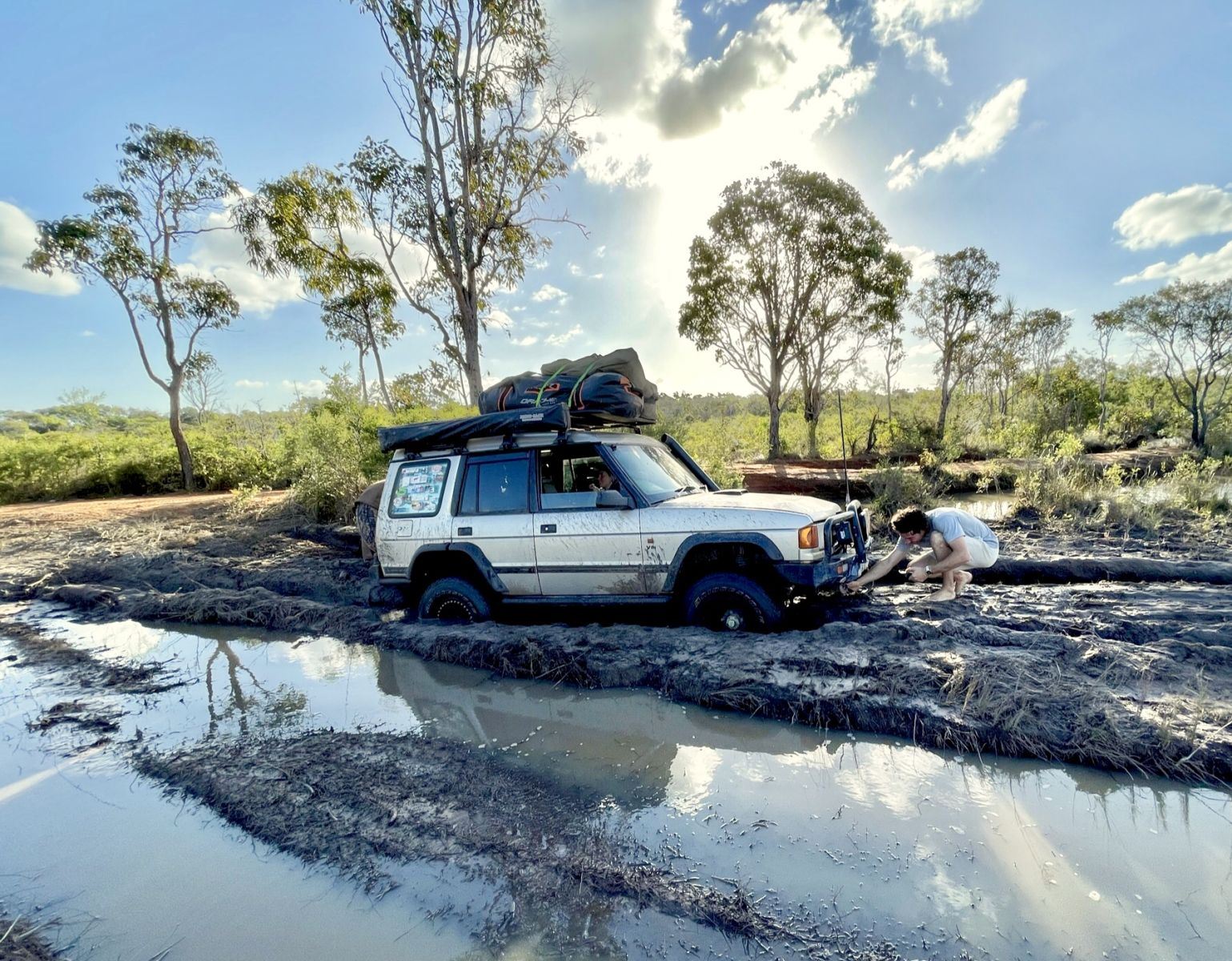
Getting Out Of The Mud! Half of the fun of off road adventures is taking it to the limit (one more time)! You are not doing it right if you don’t get stuck every now and again, and will only make a great story for your mates if you can rescue yourselves. Getting REAL good at this means you can hit harder trails, get more extreme and take adventure to a new limit. So let’s look at what will make you a 4WD rescue warrior!
Know where to cross:
There are some mud holes that you do not want to get stuck in, so be sure to check any mud hole before you go charging in. There will usually be at least a couple of options; inspect them thoroughly. If the mud level reaches above the bottom of your door sills being stuck for long will mean muddy water seeping into the cab; this can cause long-term damage and leave some bad smells that can be impossible to remove. Deep mud can also be hiding all sorts of hazards such as rocks, stumps or ruts. Sometimes the mud in a deep rut can be quite firm from being compacted by previous vehicles, though this is not always the case. The mud surrounding a rut can be even softer than the mud in it due to being splashed with water each time a vehicle goes through. Every mud hole is different and its condition can change quickly, so even if you passed the same mud hole recently check it out on foot before having a go in your 4WD.
Getting out of the mud once you are stuck:
Using first or second gear, accelerate gently and while the wheels are spinning turn the steering wheel from left to right repeatedly. This will work best if you are using mud tyres but can also work with all terrain tyres. If it doesn’t work moving forwards, try reverse. Winching – If you have time on your hands and there is no imminent danger of water getting into the cab, winching is a great option. Large trees make great anchor points for winching, but if the trees are all too small use a mate’s vehicle as an anchor instead. In extremely sticky or slippery situations it can help to have another 4WD attached to the recovery vehicle to provide additional support.
Snatch strap – If you are stuck in deep mud and need to get out in a hurry a snatch strap will certainly help, especially if you have attached it prior to taking on that mud hole. When snatching out a vehicle it can be difficult to know how much force is needed as there may be rocks, logs or other hazards in there as well. Take a slow and steady approach and listen out for unexpected sounds such as metal scraping against rock or snapping wood. Track building – A few well-placed rocks or logs can be extremely helpful in getting your 4WD out of deep, sticky mud, regardless of whether you are winching, snatching or trying to drive your way out. Apart from providing something for your tyres to gain traction on, track building can also provide a way for your tyres to climb a steep rut or ledge a little more gradually.
Handy recovery tools to carry
Tred recovery boards – Designed to handle intense levels of flex, weight, impact and torque, this great tool will help get you out of just about any stranding. Recovery boards are a life saver when climbing slippery tracks. They provide a stable surface to climb up ruts without doing damage to your tyres or potentially popping a bead. Trust us, is much easier and worth it to geto out of the car and place your recovery boards strategically rather than changing a tyre on a wet muddy hill. If you do plan on doing muddy crossings you need to consider how hard it will be to find your recovery tracks once they have been thoroughly smooshed into the mud so pick up a few recovery board leashes to help you locate your recovery boards whilst knee deep in the good stuff.
Foldable shovel – The humble shovel can play a heroic role in getting you or your mate’s vehicle unstuck, so be sure yours is always packed. A shovel is always useful especially when trying to clear away parts of the track when changing a tyre in a less than ideal situation. Rather winching onto flat ground and ruining your rims you can create a flat surface in which to safely remove a tyre. A shovel is also ideal for digging mud out from in front or behind you to create less drag if you are winching out of a tight spot.
Snatch block – You can reduce the load on your winch considerably by using a snatch block; it will also prevent damage when changing cable direction. Another handy device that is a little more expensive but completely worth it in our opinion, something we never leave home without is a recovery ring from Saber Offroad.
Knowing how to get out of a sticky spot may make you the hero of your next adventure. Pick up the appropriate recovery gear or tools you will need and learn how to use them before your next big adventure.

